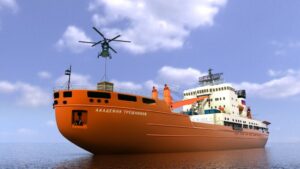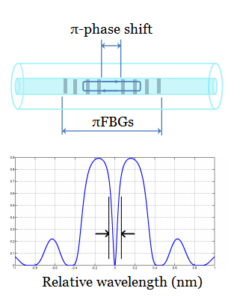 The ship’s hull, when floating or moving through the waters, is exposed to different types of forces. The magnitudes and points of those forces depend on the shape of the ship’s hull. The fiber optic ship hull monitoring system allows monitoring of not only the magnitude of strength but also its variation along the length of a continuous uninterrupted optical fiber. The distributed sensors also permit an easy and reliable comparison of a parameter at different points and the sensor cable measures at every point along the length with no “dead spots”. The ship’s integrity may be monitored in real-time by using optical fiber sensors. The collected data could be used to obtain a global condition of the ship’s hull. Ships monitoring can be relevant in the case of:
The ship’s hull, when floating or moving through the waters, is exposed to different types of forces. The magnitudes and points of those forces depend on the shape of the ship’s hull. The fiber optic ship hull monitoring system allows monitoring of not only the magnitude of strength but also its variation along the length of a continuous uninterrupted optical fiber. The distributed sensors also permit an easy and reliable comparison of a parameter at different points and the sensor cable measures at every point along the length with no “dead spots”. The ship’s integrity may be monitored in real-time by using optical fiber sensors. The collected data could be used to obtain a global condition of the ship’s hull. Ships monitoring can be relevant in the case of:
- Strain-stress state monitoring of a ship hull
- Cargo operations management on a tanker
- Measurement of the draft and level in the ballast and service tanks
- Fuel consumption monitoring system
- Remote-controllable valves and gate valves
- Main power auxiliaries monitoring (boilers, separators, etc.)
- Vibration monitoring of the main ship aggregates
- Fire detection
- Warning solution on water entering into the cargo holds
- Temperature measurement and control of the ship components
The mentioned system can also collect data from the hull monitoring system which can be used in the optimization of the ship’s design and operational availability. Continuous real data collection under different sea conditions and commercial operations enables the ship’s master/officers and other users interested in (ship’s owner, classification societies, ship’s insurance) to make correct conclusions about the actual ship’s hull state and about the necessary actions that have to be taken.
Optromix Company always takes part in the shipbuilding project. As an example, Optromix installed a strain-stress state monitoring system of “Academic Tryoshnikov” Icebreaker`s Hull. Strain sensors are welded directly to the surfaces of metal structures. Sensors applied to measure the strain of the ship hull caused by ice, waves slamming, etc. They also monitor the static operational load (during cargo transportation). As a result, it increases the operational efficiency of marine facilities. The ability to register and predict the fatigue load on certain zones helps to identify and prevent emergencies and to increase the facilities’ service life.


 The FBG structure can change with the use of the refractive index, or the grating period. The grating period can be uniform or graded, and either localized or distributed in a superstructure. The refractive index has two main features, the refractive index profile, and the decline. The refractive index can be uniform or apodized, and the refractive index decline is positive or zero.
The FBG structure can change with the use of the refractive index, or the grating period. The grating period can be uniform or graded, and either localized or distributed in a superstructure. The refractive index has two main features, the refractive index profile, and the decline. The refractive index can be uniform or apodized, and the refractive index decline is positive or zero. Nowadays, the special type of FBGs whose reflection spectrum has a notch arise from a π-phase discontinuity in the center of the grating (called
Nowadays, the special type of FBGs whose reflection spectrum has a notch arise from a π-phase discontinuity in the center of the grating (called